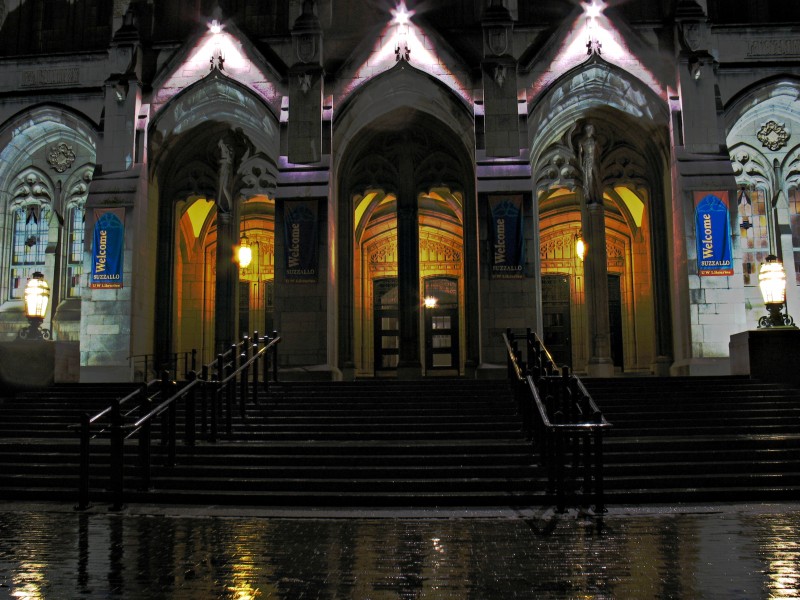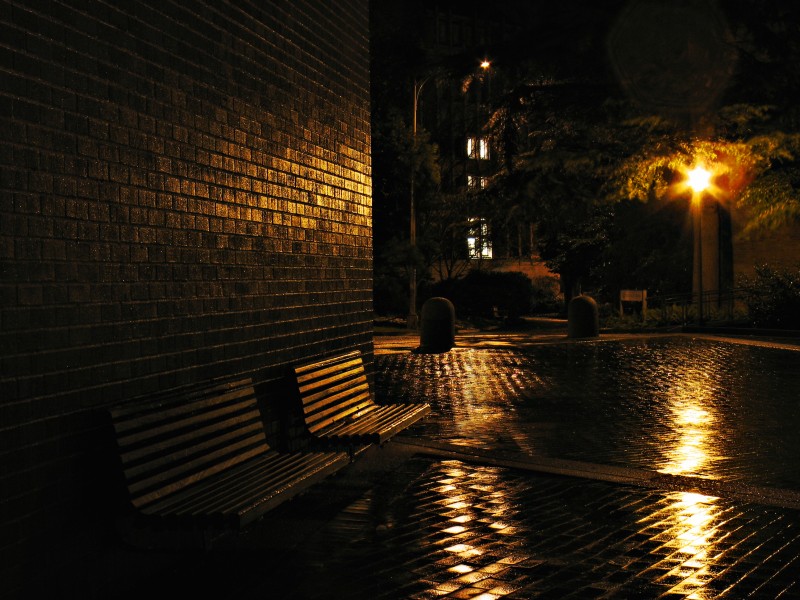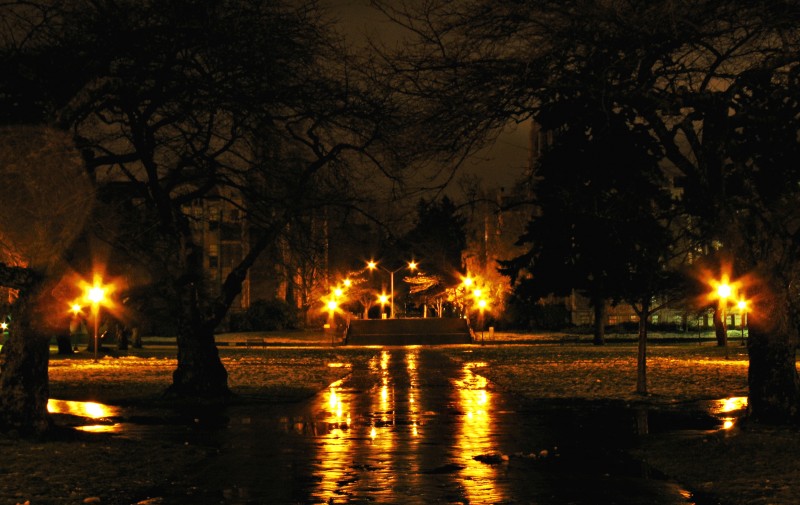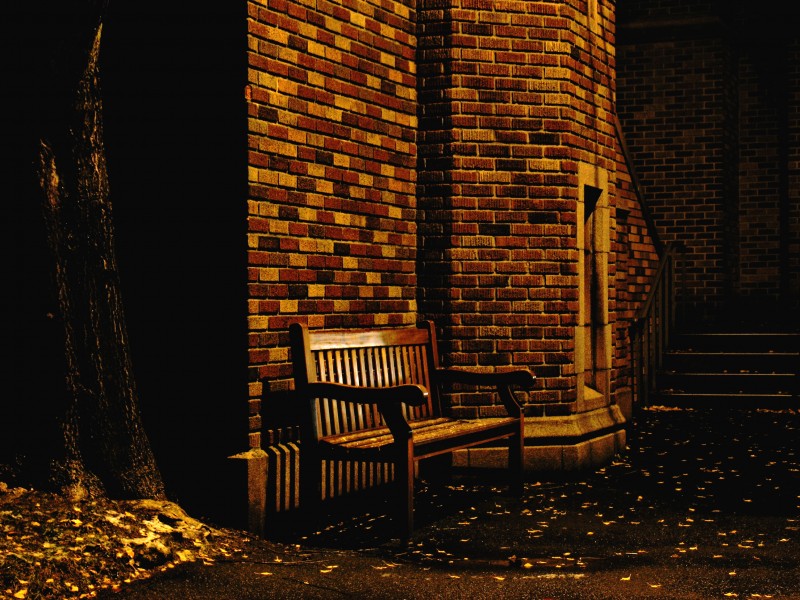
Suzallo Library, Rainy Night, University of Washington (digital)
The Comanche, Navajo, Osage and Zuni danced for rain. Ancient Romanian rainmaking rituals survive into the 21st century. City photographers – at least those who work at night – also pray for lifegiving rain, not for their crops, but for their images. Consider this photograph of the University of Washington’s Suzallo Library. Ablaze with light, the door’s multifaceted image is repeated in the wet cobblestones of the pavement, and adds a whole new dimension to this dramatic entranceway. Taken on a dry night, a later image was lifeless.

Benches and Street Light, University of Washington (digital)
Around the corner, a pair of quiet benches forms the focal point of a study of a single street light’s reflections not only on the pavement, but also on the rain-soaked bricks of the wall and the slats of the bench. Given enough water, almost any surface can become a reflective mirror that takes its place in the image.

The Rainy Mall, University of Washington (digital)
A mall walkway offered the most dramatic shot of the evening, with brilliant post lamps bouncing off puddles and patches of melting snow, framed by the naked branches of the mall’s cherry trees.

The Quiet Bench, University of Washingington (digital)
However, not all “wet” images need be as dramatic as this rainy mall. In this quiet shot of a corner bench, there are no dramatic reflections from spot light sources. Yet the rain gently accentuates every surface contour and alters colors, darkening the concrete to accentuate the sprinkling of leaves, bringing out the shape and varying colors of the brick, and catching the highlights on the bark of the single tree. Moreover, the focal point of the image, the highlight on the back of the bench, is a direct result of the rain soaking the dull wooden surface. This image would have had little life on a dry evening.